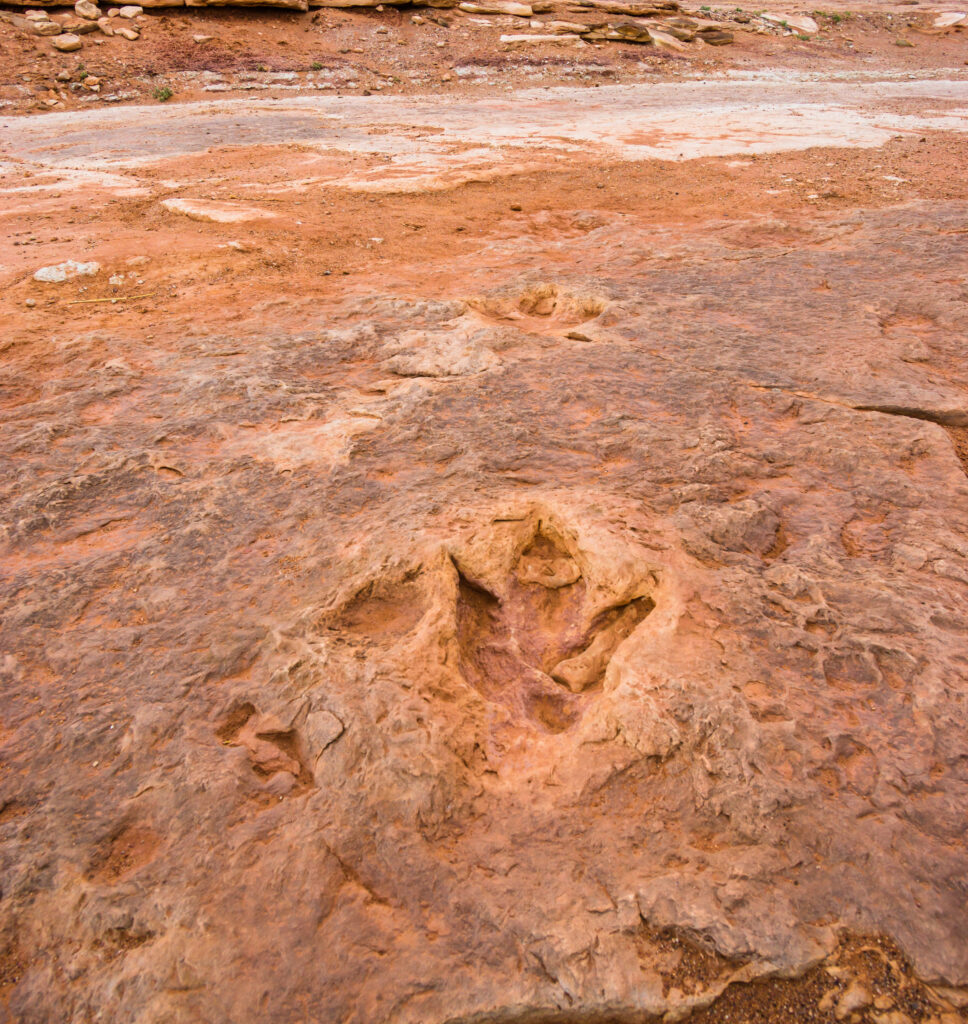In an exciting discovery that combines science and chance, researchers have uncovered fossilized dinosaur footprints along the rocky shores of Baunei, Ogliastra in Sardinia. The find occurred during the filming of a geomorphological documentary. What started as a simple visual study of the coastline turned into a historic scientific breakthrough.
The footprints were quickly identified as those of a bipedal theropod dinosaur. Scientists believe the animal lived during the Middle Jurassic period, around 165 million years ago. This makes it the oldest known dinosaur evidence found in Sardinia.
Footprints of the Past
The discovery was led by a team of experts including Professors Antonio Assorgia, Sergio Ginesu, and Stefania Sias. The prints were found embedded in rock formations that date back to the Jurassic era. The location lies close to the shoreline, giving clues about the landscape of ancient Sardinia.
These rocks preserved the footprints remarkably well. The team used the shape and spacing of the prints to reconstruct the dinosaur’s movements. They concluded that the animal was walking through muddy, tidal areas likely filled with soft sand and water. The tracks show how the dinosaur stepped across the marshy ground, leaving behind a glimpse into a world long gone.
A Female Dinosaur Named ‘Bibi’
Palaeontologist Marco Zedda gave more details about the dinosaur’s possible appearance. He estimated the dinosaur stood between 120 and 160 centimeters long. The lack of claw marks in the prints led Zedda to believe it may have been herbivorous, though theropods are usually thought of as carnivores.
The team affectionately named the dinosaur “Bibi.” While the sex of the dinosaur cannot be known for sure, the researchers suggested Bibi may have been female based on size and track patterns. This theory remains under review as more analysis is completed.
One footprint can tell a lot, said Zedda. The angle of the toes, the depth of the imprint, and even the pressure distribution help scientists build a picture of how the dinosaur lived and moved. He noted that the rocky surface where the tracks were found held more than just Bibi’s steps. It also revealed signs of other creatures that may have shared the coastal habitat.
A Window Into Ancient Ecosystems
The area where the tracks were found gives valuable insight into Sardinia’s prehistoric environment. The land during the Middle Jurassic was likely a wet, semi-aquatic zone. Many creatures would have made their home in its warm marshes and tidal flats. The discovery of these tracks proves that dinosaurs were part of that ancient ecosystem.
Until now, Sardinia had no confirmed fossil evidence from the Mesozoic era. This find marks a major shift in how scientists view the island’s prehistoric past. It opens the door to the idea that Sardinia was not isolated from other dinosaur-inhabited areas during the Jurassic.
From Documentary to Discovery
The footprints were first spotted by Francesco Ginesu, who was directing the documentary being filmed in the area. He said the discovery was both unexpected and life-changing. Ginesu explained how a regular filming trip turned into one of the most exciting finds of his career.
He emphasized that sometimes the most important scientific discoveries happen outside of labs. A curious eye and a willingness to look closer made this moment possible.
Ginesu said the prints added not just information, but also hard proof that dinosaurs once walked in Sardinia. The find challenges earlier beliefs that the island was free of dinosaurs due to its geological history.
“This changes everything,” he stated. “We now have physical evidence that can help us rewrite Sardinia’s ancient timeline.”
More to Discover Beneath the Surface
At the press conference where the team presented their findings, all the scientists stressed the value of the site. They explained that such fossil tracks are rare and can teach us more than bones. Footprints show behavior—how animals moved, how fast they walked, and even what direction they traveled.
Plans are already in place to continue digging in the area. The team believes there could be more tracks or fossils hidden just below the surface. They hope to uncover more secrets of the creatures that lived there millions of years ago.
This exciting discovery not only brings Sardinia into the spotlight of paleontology but also proves that sometimes, nature holds surprises where we least expect them.


